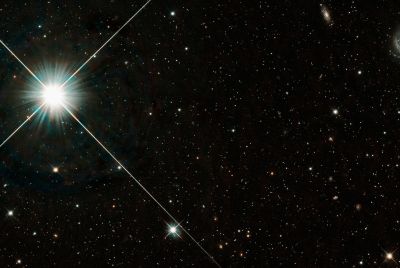What is Perihelion, the point where the Earth is closest to the sun?

On Saturday 2 January, the planet reaches the point in its orbit when it is closest to the sun – the Earth's perihelion. Earth is about 5m Km – or 3m miles – closer to the sun in early January than it is in early July.
This year, on January 2, 2016, the Earth at its closest point swings to within 147,100,176 Km (91,403,812 miles) of the sun. That's in contrast to six months from now, when the Earth reaches aphelion – its most distant point – on July 4, 2016: 152,103,776 km (94,512,904 miles) away.
It's a common misconception that the Earth's distance from the sun is what causes the seasons. However, it's the 23.5-degree tilt of the Earth's axis which creates winter and summer. The elliptical shape of Earth's orbit causes the variation in the length of the seasons – and brings us closest to the sun in January.
Though not responsible for the seasons, Earth's closest and farthest points to the sun do affect seasonal lengths. When the Earth comes closest to the sun for the year, the world is moving fastest in orbit around the sun. Earth is moving in January at 30.3 Km per second (almost 19 miles per second). It's travelling about a Km/second faster than when Earth is farthest from the sun in early July. Thus the Northern Hemisphere winter (Southern Hemisphere summer) is the shortest season as Earth speeds from the solstice in December to the equinox in March.
Are the December solstice and January perihelion related? - Earth comes closest to the sun on January 2, 2016 a... https://t.co/QZnujpj6ZT
— Jeff Rebitzke (@Jeff_Rebitzke) December 31, 2015
"All planets in our solar system travel around the Sun in elliptical orbits. It's Kepler's 1st Law," says University of Florida astronomy professor George Lebo. "The eccentricity of Earth's orbit is 1.7%. In January when we're closest to the Sun (perihelion), the distance is 147.5 million km."
A distant sun means less sunlight for our planet. "Averaged over the globe, sunlight falling on Earth at aphelion [the furthest point the Earth is from the sun] is about 7% less intense than it is at perihelion," says Roy Spencer of NASA's Global Hydrology and Climate Center (GHCC).
"Seasonal weather patterns are shaped primarily by the 23.5 degree tilt of our planet's spin axis, not by aphelion or perihelion," continues Lebo. "During northern summer the north pole is tilted toward the Sun. The Sun climbs high in the sky, and days are long. That's what makes July so hot."
Where does the word come from?
The word perihelion comes from the ancient Greek, meaning peri (near) and helios (sun).
Telescopic view
The Rosetta space probe has been studying Comet 67P/Churyumov–Gerasimenko and at perihelion the comet's activity is expected to be at its highest. "Perihelion is an important milestone in any comet's calendar, and even more so for the Rosetta mission because this will be the first time a spacecraft has been following a comet from close quarters as it moves through this phase of its journey around the Solar System," said Matt Taylor, European Space Agency's Rosetta project scientist.
"We're looking forward to reaching perihelion, after which we'll be continuing to monitor how the comet's nucleus, activity and plasma environment changes in the year after, as part of our long-term studies."
This time of year is particularly interesting for astronomers because near perihelion, comets reach their highest level of brightness, releasing large amounts of gas and dust. Possible outbursts and other unpredictable events might also take place around perihelion, so it is extremely important to obtain as many observations as possible during this period.
While ground-based observations provide large-scale context for Rosetta's measurements, Rosetta's close-up data provide in turn the possibility to calibrate many of the observations made from the ground.
© Copyright IBTimes 2025. All rights reserved.



















